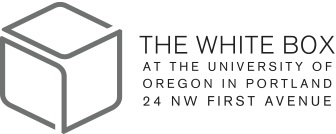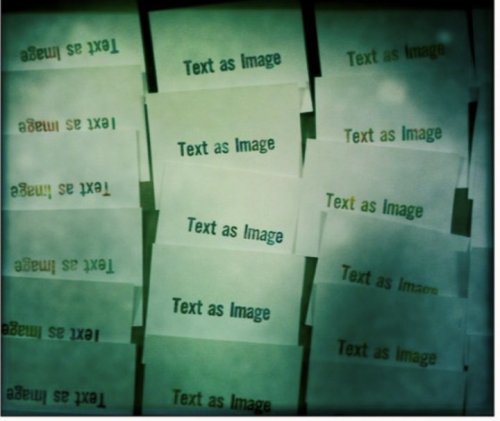“What I Devoted Everything To”: Michael Salter Style
A Profile on Michael Salter and the Visual Function Apparel Collection
[Images included herein represent a selection of designs from the Visual Function collection]

For those of you who create, who inspire us with images, objects, words, designs, thoughts, and feelings, we, as your audience, wonder what it is that triggers your sensations. Through what valves of perception flow your attentions and intentions?
As a life’s dedication, the artist produces unique works of creativity capable of provoking intense responses—this alone seems a daunting task. In a university setting, only professional artists with active professional exhibition records and the promise of upward trajectory of that research practice are considered for faculty appointments. The artist-as-faculty-member has brilliantly managed to fit within the academic system offering to students an opportunity to discover and develop skills with hand, mind, eye. Indeed, the artist as professor | instructor has successfully merged an ingenious ability for visual creativity and academic intellectualism. What happens to the artist|professor’s creative output on a personal level when this mixology exists? What continues to fuel and fire the individual’s ideas and participation in the contemporary,marketable art world? How does an artist continue to produce and relate on both professional and personal levels to a dynamic career? Is this a dichotomous choice or can producing art for commercial sale contribute to and enhance a professional teaching situation? We have asked Professor Michael Salter of the University of Oregon School of Architecture and Allied Arts‘ Department of Art (Professor Salter recently launched his own line of screened teeshirts with Visual Function) to enlighten us…..
The idea for this exploration of creative impetus came from a random post on Facebook, of all things. Michael Salter, himself a savvy social media habitué, had posted about a conversation between himself and a student. The student had come upon the professor while he was drawing and asked “Is that your hobby?” Once posted, this comment elicited a large outpouring from Professor Salter’s FB following. That, in itself, is not surprising. But the professor’s reported response was revealing: “Actually [it] is more of a way of life in many respects, it is my research.” Salter’s gentle and understanding approach motivates the realization that professor-artists rigorously take part in a pursuit of artistic endeavor outside of the university. This is, in fact, what amplifies their expanding connections to creativity, progression, and innovation. What Salter posted next speaks volumes about this paramount connection to practice and profession: “…it was so strange for a student to have no idea at all that my research, practice and career have entirely informed my teaching and that I teach what I do, not my hobby……it has never been a hobby…. it’s been what I devoted everything to.”

Suffice to say, I was moved enough to google “Michael Salter”. Initial searches revealed his university affliation, then his website (definitely a recommended experience) and, after a bit of surfing around, this curious new venture: graphics on teeshirts with Visual Function. What caught my attention were the icons: familiar yet strange in a can’t-look-away-provocative-type impulse. I located a few former students of Professor Salter’s and decided to delve into this further. Lindsay AuCoin, former student and currently an art instructor at both UO and OSU, commented, “At a glance, you might think [Professor Salter’s] icons are nothing more than logos for products you’ve never heard of….these images are a familiar kind of unfamiliar…[riding] the line of the expected and unexpected. As a viewer you are left to either piece it together to make sense for yourself, or just let it be the confusing thing that it is. Either way, it gets you thinking and [that] is the strength of his work.”

Another former student of Salter’s, Andrew Pomeroy notes, “Salter’s iconography has always occurred to me as a clever exploit of our brand-obsessive nature, as appropriations of the massive lexicon of symbols that make brand statements so tenacious.” Pomeroy continues, “What separates his work from the rest is that it uses this visual language to compose ideas rather than to simply stamp a name on a piece of clothing, with a level of visual wit that keeps it potent, while unassuming and accessible.”

Consequently, I went “shopping” and opened the Visual Function website. The comments I was hearing so compelled me to want to see these designs….what Professor Salter, himself describes as “torment[ing], enlighten[ing], antagoniz[ing]” and able to tickle the cognitive spirit. Navigating through Visual Function proved a novel experience. I was greeted with silhouette-styled screens that enveloped me in everything from the charming, (who could not love Bunny Buddies?), to the macabre (Bunny Grinder), to the questionable (Atomic Baby Deer, could that be Bambi with bubbles? babies? or burps?), to the idiomatic (fiscally oozing Money Grabber, or the surreally blended Fox and Bunny, or Cloudy Relationship— ever been in love and been told your head is in the clouds?). Blunt, thought-provoking, somewhat gritty, sometimes saccharin cute and strong enough to contain volumes of connotation and innuendo in one noire-et-blanche silkscreen, I asked Professor Salter to elaborate.

It is streetwear for the thinking person, his website boldy declares. Professor Salter continued, “I have always been a fan of the research university model. I believe in practicing researchers delivering their work into the world at large make for effective teachers…..I bring every facet of my professional experience to the classroom.”

Obviously, this outlet of creativity, teeshirt emblazoned with iconography, allows Professor Salter to express and communicate in a way he says lets him “teach [his] people how to communicate clearly and honestly with the visual language, as long as I am doing it myself the loop is complete.” While the designs are clearly thought-provoking (some generating even a little psychological discomfort) and priced to sell in the marketplace of a tee shirt-wearing public, Professor Salter explains that he has been “producing images and objects and delivering them into the world in a variety of ways for many years, money has rarely been the motivation…. Without being didactic, I want my work to engage people to question what their world looks like and why. Much of the iconography I’ve drawn that exists on the apparel I am selling is simply supposed to amuse, instigate, or otherwise make people think a little bit more…..” surely, above all, purposeful and ready-to-wear.

When asked to comment on how his art work and his marketable tee-shirt entrepreneurial endeavor contribute to his academic work, Professor Salter says “My work has always existed in a gray area between art and design. This new tee shirt collection of my images is another exercise of that idea. The images have been drawn, painted, animaged, extruded dimensionally, screen printed, laser cut, and projected, it only makes sense that the work is realized in yet another medium, in this case, apparel. The whole project is still a little too new to really reflect on what I’ve learned from it, but you can bet it will in some way end up back in the classroom, affecting my other work and motivating new work. I just believe its all connected.”

Fascinated by this connection, I asked Professor Salter how this translates to his students on the university level. He splendidly emoted on this subject testifying to the importance the students hold: “I think it is our job to make [the students] brilliant, honest, original creative thinkers who can communicate visually. [The University] is about a broader view of the world, about being a contributor to culture and critically looking at the world we live in.”
Lindsay AuCoin sums up Professor Salter’s work ethic, “his work comes from so much observation, examination, deconstructing, reworking, and manipulating parts of our culture. He has pulled it all apart and reassembled new forms from it. Putting these images on tee shirts is like coming full circle, in a way, but given the breadth of investigation that has occurred, it all seems to fit so nicely back into the box from where it came….any artist would be motivated by that.”

Perhaps Professor Salter has realized an ideal combination between the dynamic relationships of thinking, creating, and working such that each aspect feeds into and elevates the other. It seems a lifestyle, and a conscious choice: whether or not the gamble leads to economic success. Such an impassioned and committed devotion to one’s art and practice can only contribute to a confluence that benefits all– students, professor, the community who buys from the creative global marketplace infusing the economy and fueling ventures like Professor Salter’s Visual Function.
The artist|professor’s courage to integrate the academic, the inspired, and the personal creative expression is what contributes to and leads forward our university environment to be one of excellence and innovation, and provides a key element in the arts ecology of the international and regional contemporary art scene. Indeed, that is just one of the aspects we gratefully owe to professors and instructors in the art and design fields: they have the bold vision to be progressive, influential, experimental and to see their creative triggers through to a visual expression. Professor Salter was not content to stop with the expected. Artists and the Artist-As-Professor challenge us and urge us to engage time and time again making use of mediums we continually are drawn to.
Professor Salter’s tee shirt collection, screened images on a simple wardrobe staple, is also making thinkable messages thoughtfully executed attainable, something we can pull out from the drawer, pull on over our head, and proudly relish the ideas emblazoned across our chests, front and center, for something around $20. And THAT’s something to provoke thought.
Wash-and-wear-and-ready-to-think adds a whole new dimension to this cotton blended billboard of Americana. One might venture to say Professor Salter has mastered the art of personal enjoyment and fulfillment of his craft and practice as well as translating his observations, expertise, and approach to his students influencing and inspiring their education and outlook and creating thinkers. After all, students can benefit from an instructor who is a partner with them in forging the path of artistic development, thereby providing a model of progression and painting the variants of possibility that creative expression can afford in the real world. Wash-and-wear infused with a hearty dose of ready-to-think adds a whole provocative dimension to this icon of fashion.
Plus sometimes a tee shirt does say it better.
post sabina samiee | uo pdx communications
images courtesy of the artist, michael salter
thank you to michael salter, lindsay aucoin and andrew pomeroy





